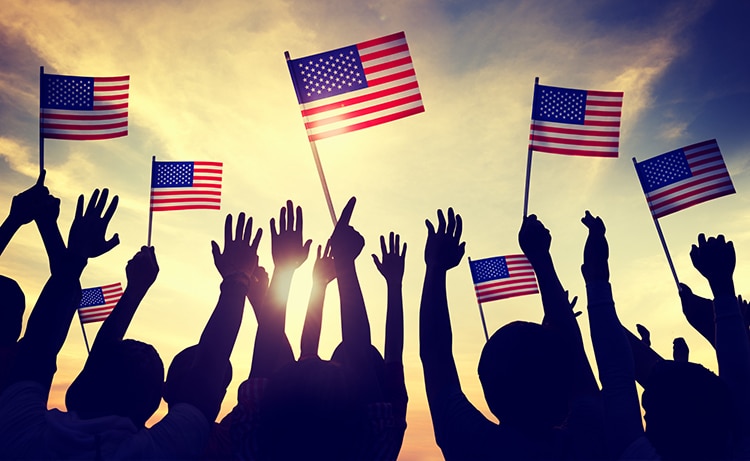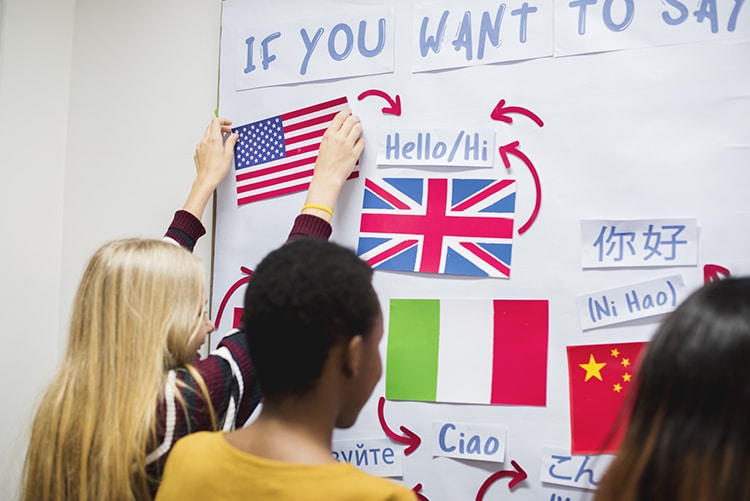
Photo: RAWPIXEL/Depositphotos
Most countries have an official language. For example, Canada boasts dual official languages: French and English. Switzerland has four, which are largely geographically segmented in their usage. Bolivia boasts the Guinness World Record for most official languages at 37—including Spanish and a litany of Indigenous languages spoken by citizens. Even when not an official language, English is spoken widely across the world and forms a bridge between language divides. It is often used in business, universities, and international governance. Despite being the native language of 78% of Americans, English is surprisingly not the official language of the United States. This history of language is inextricably entwined with that of power in American history.
The earliest Europeans who colonized America brought with them a variety of languages, including English, Spanish, Dutch, and French. They arrived on shores which already boasted a rich linguistic tradition of Indigenous languages, many of which survive today despite years of persecution and conscious attempts at erasure through residential schools, violence, and forced assimilation. Meanwhile, enslaved people from Africa brought their own languages too, but these were treated as dangerous modes of resistance. At the time of American independence from Britain, a national language debate arose. “The Founding Fathers didn’t see a need to declare one,” Dr. Wayne Wright, a professor at Purdue University, told CNN in 2018. “English was pretty much the dominant language of the United States at the time so there really wasn’t a need to protect it. And they didn’t want to offend their fellow Americans who helped fight for independence.”
Throughout the 19th century, new waves of European immigrants built significant populations in the U.S., including Italians, the Irish, and eastern Europeans. Asian immigrants also arrived, despite legislative attempts to restrict their immigration. Debates over English’s primacy and the treatment of non-English speakers have continued throughout our national history, intensified often by periods of Nativism and xenophobia. “The sad thing about debates about language is that they’re rarely about language itself, but the people who happen to speak those languages,” said Wright. The movement to enshrine English continues today, with a 2023 bill by Republicans pending in Congress. On the state level, many states have officially named English as their language.
However, at the same time, American language education is lacking compared to much of the world. Although the number of Americans who speak a second language at home is rising, bilingualism lags behind much of the world. As America becomes more multicultural, political power struggles over an “official language” continue to speak more to broader debates over immigration, religion, and race. As Alberto Rey Agudo, of Dartmouth College, wrote in the LA Times, “Most important, they show that languages are not a zero-sum game. Kids can speak English and Spanish—or Portuguese, French, or Chinese—and thrive. Maybe they will teach the grown-ups a thing or two.”
The United States of America, unlike most countries does not have an official language, despite English’s prominence in culture and politics.

Photo: RAWPIXEL/Depositphotos
h/t: [IFL Science]
Related Articles:
Mysterious Telegraphic Message Found in Hidden Pocket of Silk Dress From 1888 Is Finally Solved
Most Common Languages Spoken Around the World and Their Native Speakers
Comic Artist Maps the History of Languages with an Illustrated Linguistic Tree
A Fascinating Look At American History: 1860-1971 (20 LIFE photos)
